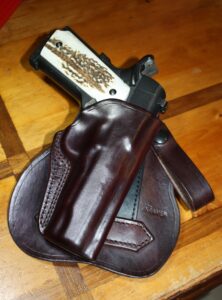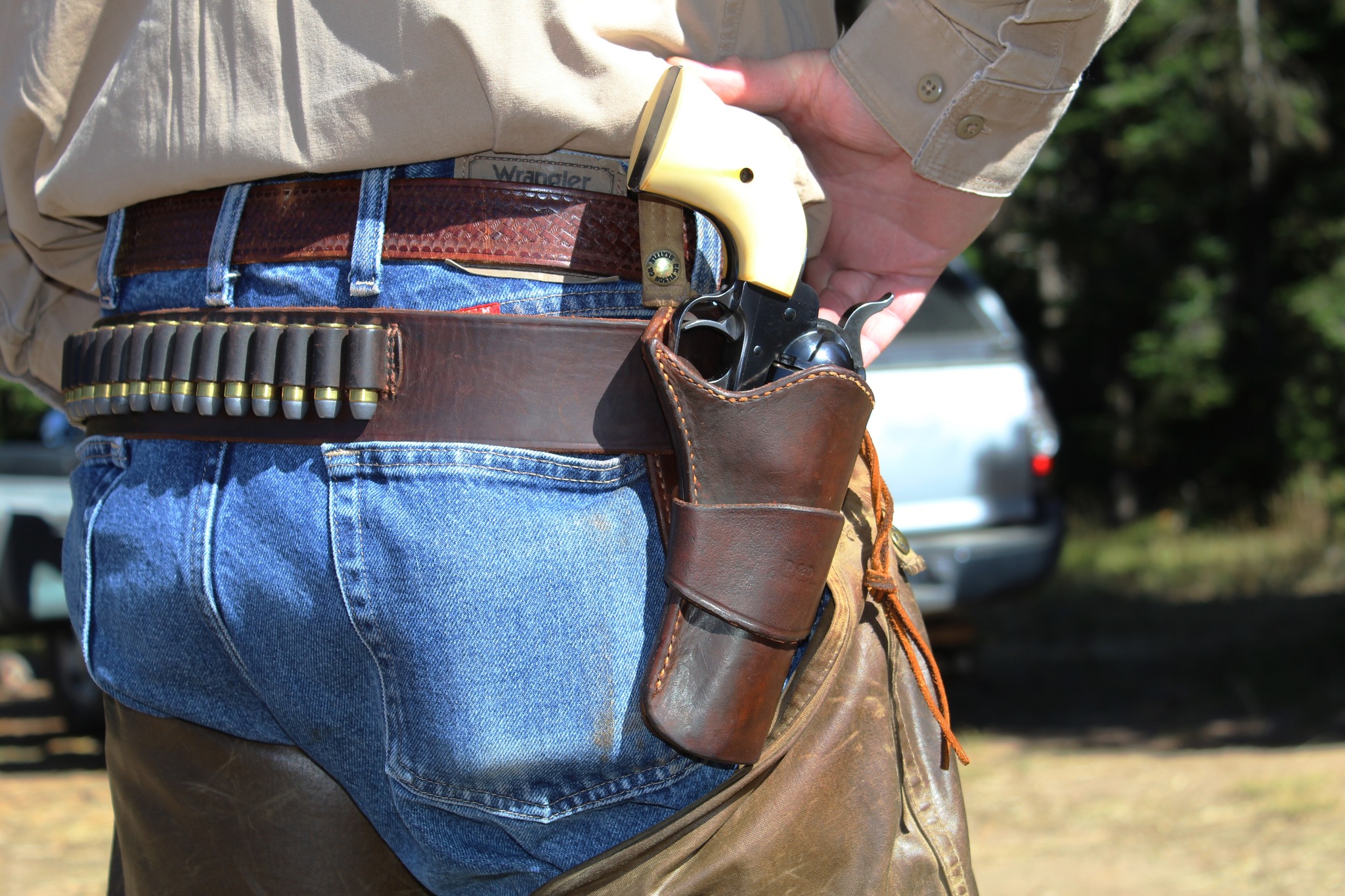
By Dave Workman
Editor-in-Chief
The ability to look back to my youth when shootin’ irons had to be carried prior to the onset of layered nylon, Kydex and other rigid materials, allows me to say with considerable experience that leather—real, honest tanned animal hide—is still tops for housing handguns.
Maybe part of it is because of nostalgia and adherence to tradition. John Wayne would have looked a little out of place showing up with a polymer gun in a plastic holster. Can you imagine Joel McCrea and Randolph Scott marching out to shoot those bad guys in “Ride the High Country,” daring them to “slap nylon?” I’d rather not think about it!

I do occasionally carry a Ruger .22-caliber pistol in a nylon holster attached to the waist strap of my backpack during hunting season, but under most normal circumstances, my sixguns are nestled in leather holsters, usually of my own manufacture. The holsters frequently ride on leather cartridge belts, and over the years, I’ve never had a problem with any of them. And in September, I carry that pistol in a Triple K holster built for Ruger semi-autos.
I’ve seen some nylon holsters fail, and some made from the plastics have cracked or somehow otherwise failed or malfunctioned. I cannot recall ever hearing of a leather holster failing so dramatically.
According to an online Wikipedia definition, “Leather is a strong, flexible and durable material obtained from the tanning, or chemical treatment, of animal skins and hides to prevent decay. The most common leathers come from cattle, sheep, goats, equine animals, buffalo, pigs and hogs, and aquatic animals such as seals and alligators.
“Leather can be used to make a variety of items,” the definition continues, “including clothing, footwear, handbags, furniture, tools and sports equipment, and lasts for decades. Leather making has been practiced for more than 7,000 years and the leading producers of leather today are China and India.”
(Odd, I was always under the impression that cows and other animals were the leading producers of leather…)
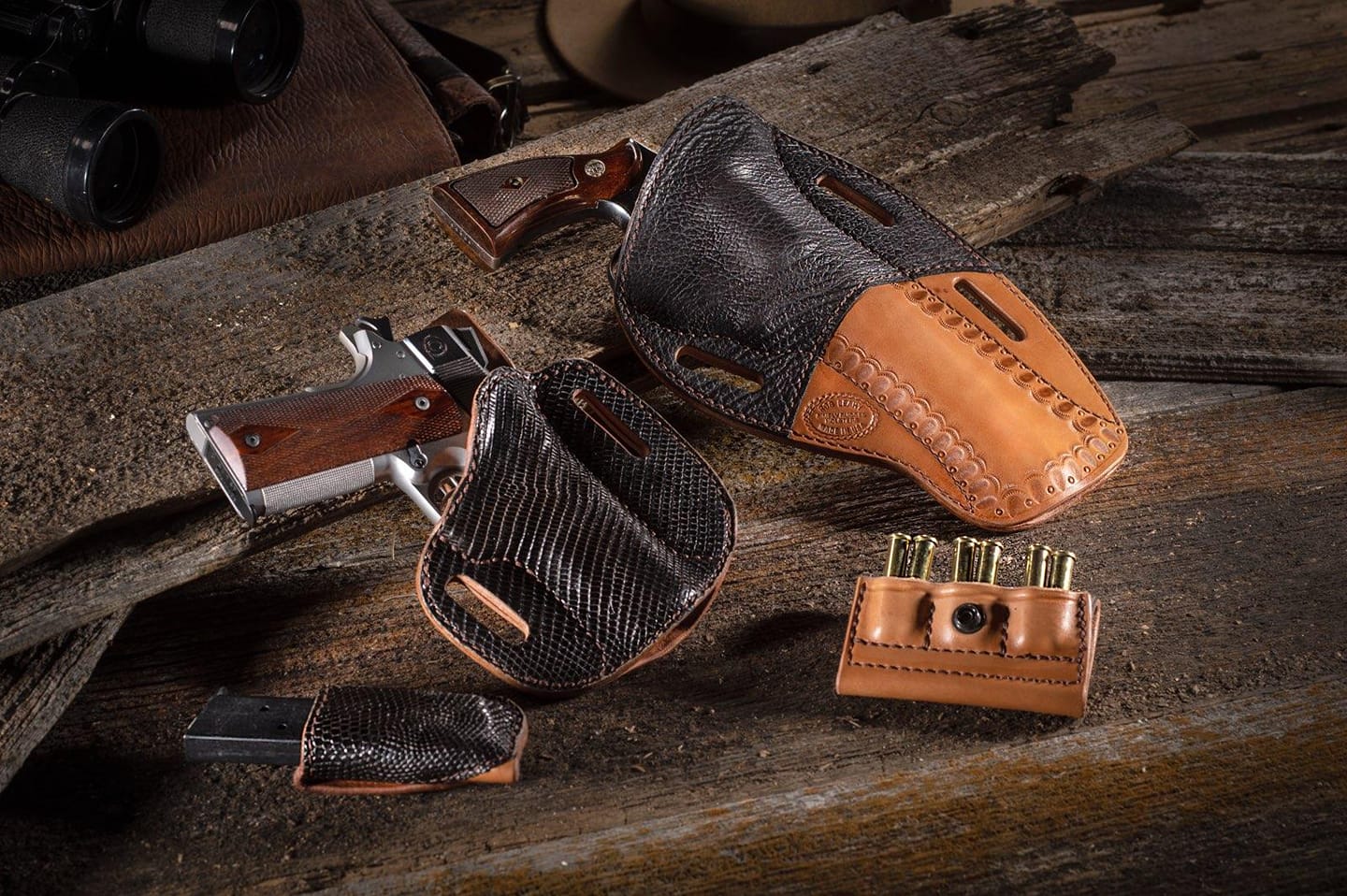
Over the course of several decades, I’ve carried sidearms openly and concealed in all kinds of ways; shoulder holsters, on-the-belt concealed, IWB, on cartridge belts and even in ankle rigs. I’ve used “pancake” type holsters, traditional rigs with snap straps or hammer thongs, high-rides, Tom Threepersons-type models, an old GI tanker shoulder/chest holster with a .45 Government model, and even a Yaqui Slide-type model. I think the first commercial rigs I bought more than 50 years ago were made by the old George Lawrence Company and Bianchi, and I’ve still got them, one for a Ruger Blackhawk and the other for a 6-inch Smith & Wesson N-frame.
Let’s be honest: No self-respecting handgunner has just one holster. It would almost be sacrilege! Most guys I know have several holsters, and a few have boxes full of them…all for the same sidearm. It’s not as crazy as it sounds. Then, again….
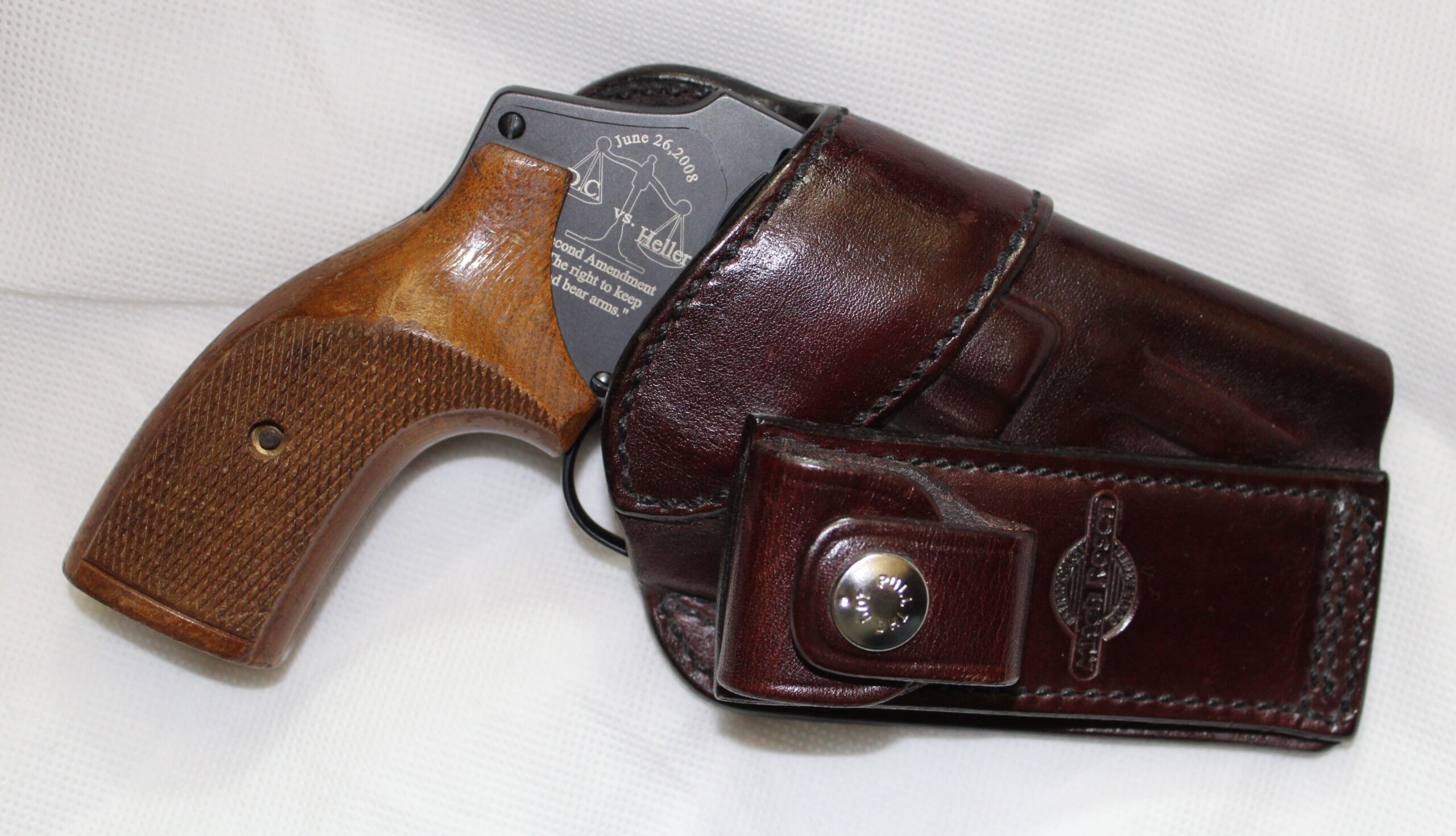
Meaning no disrespect to the current generation of shooters and companies that produce synthetic holsters, it’s my impression that leather rigs are durable, rugged and reliable. If they get some scratches, it just gives them more character.
For the longest time, all of the holsters in my gear were “traditional” with exposed triggers/trigger guards. People who experience negligent discharges can’t seem to understand not holstering a sidearm with their finger on the trigger.
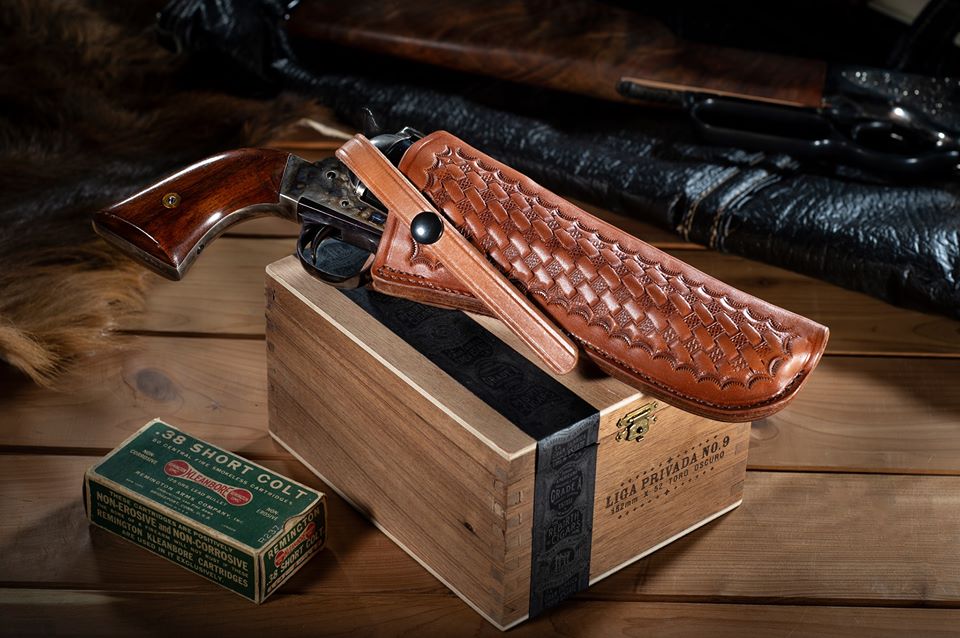
In more recent times, holster designers have been producing rigs that cover the trigger, presumably with safety in mind. Many of these designs are first-class eye candy, done by folks such as Mitch Rosen (Mitch Rosen’s Extraordinary Gunleather), Rob Leahy (Simply Rugged Holsters), Greg Kramer (Kramer Leather), Gene DeSantis (DeSantis Gunhide), Milt Sparks (Milt Sparks Holsters), El Paso Saddlery and Mike “Doc” Barranti (Barranti Leather). All of these guys are craftsmen and judging from the number of images one finds on social media of this or that handgun nestled in one of their holsters, it is a testament to not only their products, but the durability of their material.
True, in what is often laughingly referred to as my “leisure time,” I’ve operated my own one-man shop doing holsters and cartridge belts. I simply enjoy working with leather and see every project as a challenge. There are many good holster makers out there who continue working with leather as their primary material of choice, and in my humble opinion, they’re all geniuses because they use this rugged, natural material.
Leather, in my opinion, beats all the other materials hands down for another reason: It can be as plain or fancy as one might want or can afford. Nobody to my knowledge has ever tooled a Kydex holster. Leather, on the other hand, has been adorned with floral carving, basketweave and other stamped designs or patterns, including “fish scale” and even a “hammered” finish. It might be left plain with a handsome oiled finish or a shinier finish typically applied by hand. There are holsters built with a rough-out finish made famous by the Summer Special, an inside-the-waistband rig developed by the late Bruce Nelson of Arizona. The Summer Special is still manufactured by Milt Sparks, and there are knock.
Many holsters are “boned” – that is, tooled to the profile of the pistol or revolver for which they are built—which is a process applied to damp leather and the allowed to dry and take a set. Not only is this functional, it is very attractive.
Leather holsters can be lined or unlined. I’ve found that rigs with some sort of suede lining might not cause as much holster wear on a handgun’s finish than holsters with other linings or unlined, but this is also largely a matter of how well the handgun fits, and how often it is drawn and re-holstered.
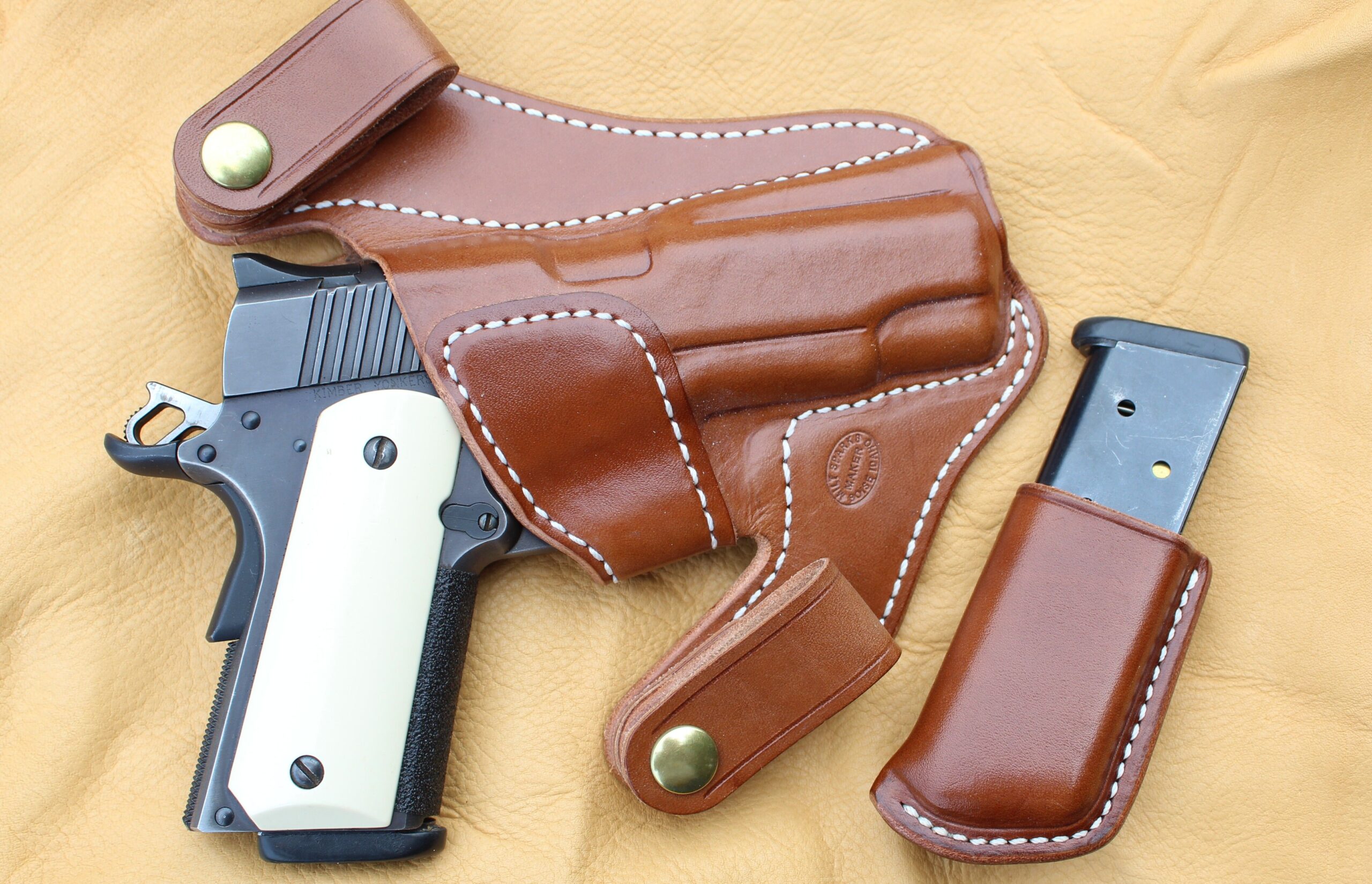
We haven’t talked about cartridge belts, and there are many choices. I personally like a belt with lots of cartridge loops while others may opt for having a slide-on carrier that holds six or a dozen cartridges.
They can be straight cartridge belts, or the popular Buscadero-type western fast draw rig with holsters attacked via a drop loop on the underside on one or both sides.
One of the more famous presentations is the rough-out belt, made popular by the late John Wayne in many of his films. Whoever thought of this way back when was a genius because unlike typical belts with smooth surfaces and linings, the Wayne-type belt does not slide around once secured.
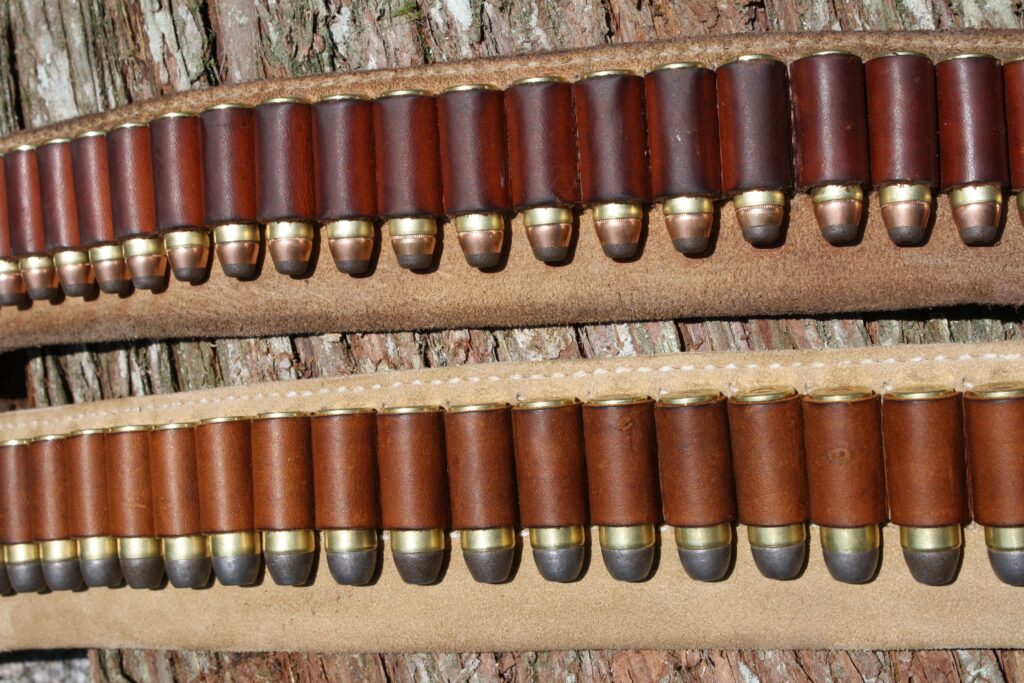
Take care of a good holster and gunbelt, and they should last a lifetime. Some oil every year (Neatsfoot is the best, in my opinion) will prevent the leather from cracking.
Leather stands up in all kinds of weather. It’s easy to maintain, fits literally like a glove and protects what’s inside. You can’t beat it, so you might as well wear it!

